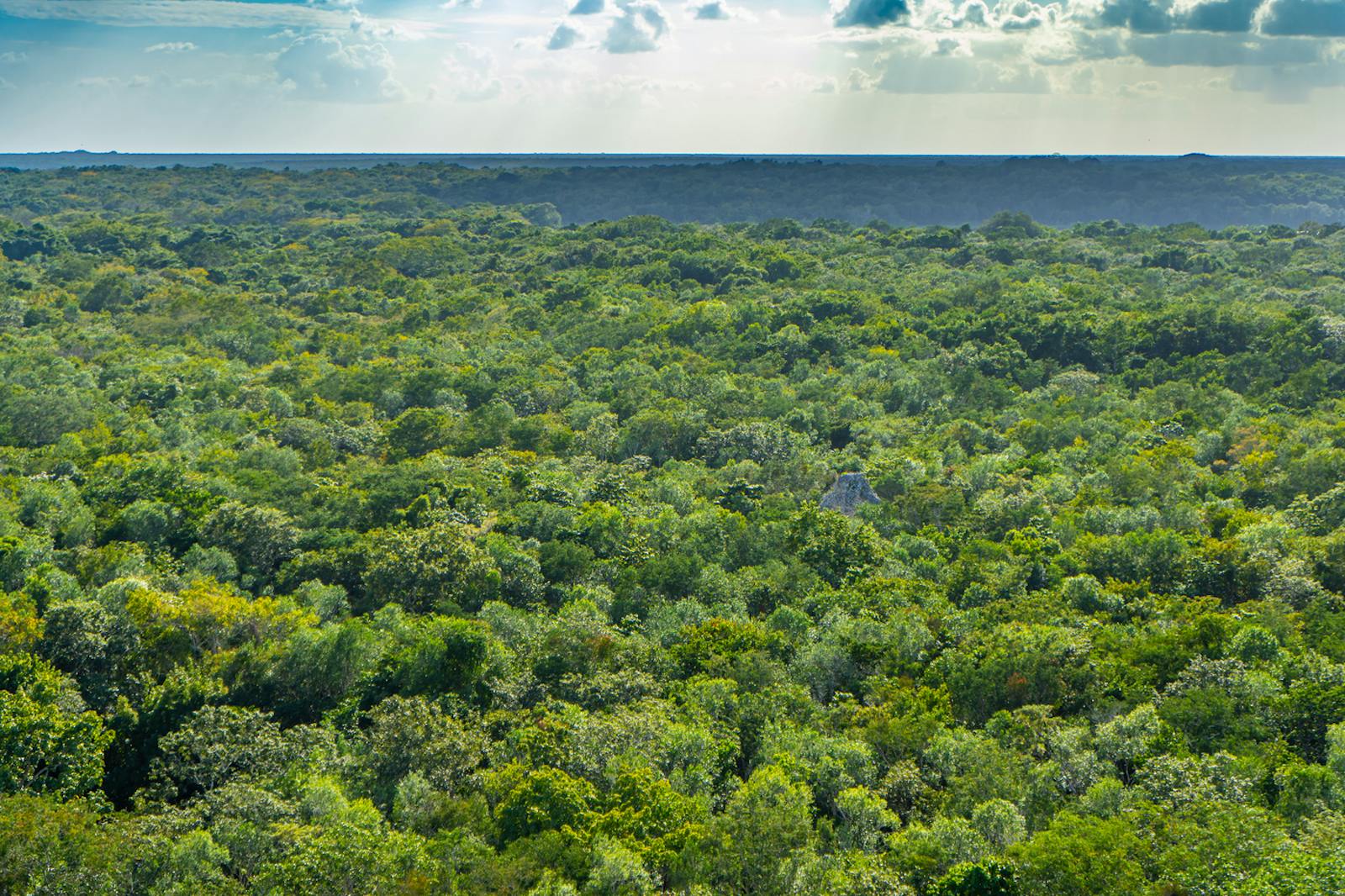Yucatan Dry Forests
The ecoregion’s land area is provided in units of 1,000 hectares. The protection goal is the Global Safety Net (GSN1) area for the given ecoregion. The protection level indicates the percentage of the GSN goal that is currently protected on a scale of 0-10.
Bioregion: Yucatan & Veracruz Mixed Forests (NT27)
Realm: Central America
Ecoregion Size (1000 ha):
4,988
Ecoregion ID:
551
Conservation Target:
55%
Protection Level:
2
States: Mexico
The white-fronted parrot is a specialist in dry forests and is one of the resident seed dispersers in this ecoregion. They normally group together in family groups and flocks of up to 20 individuals, but around fruiting trees hundreds have been observed together foraging. The species is named for the white patch of feathers on its forehead, which varies among individuals, and is surrounded by a blue cap and a red mask. Their distinctive look together with their loud calls and chatters make their presence unmistakable among the treetops in the Yucatán Dry Forest ecoregion.
.jpg)
The flagship species of the Yucatan Dry Forests ecoregion is the white-fronted parrot. Image credit: Courtesy of Mark Watson, Flickr
The ecoregion is on the northwestern portion of the Yucatán Peninsula in Mexico. The forests grow on a vast portion of flat terrain that are 400 m above sea level. The soil is young and calcareous (chalky) with extensive draining, which prevents flooding. The climate is tropical subhumid with a long dry season. The average annual rainfall in this ecoregion does not exceed 1,200 mm per year.
Dominant vegetative species in the central portion of the region include wild tamarind and Jamaican dogwood trees. They are often intermixed with other tree species such as Spanish cedar, gumbo-limbo, dryer’s mulberry, and Spanish elm. In the northern part of the ecoregion, near the coast, cacti become more abundant. Common species include Mexican organ pipe, Cephalocereus gaumeri, and the endangered Pterocereus gaumeri.
The dry forests of Yucatán constitute a unique island of vegetation in the Gulf of Mexico region. They are isolated from other dry forests by the sea and by a vast extension of moist forests in the Maya region. Some researchers hypothesize that the isolation of these dry forests has been responsible for the unique composition of the region’s flora and fauna. Many animals and plants cannot survive or readily disperse into the surrounding ecoregions, a fact that has accounted for the high number of endemic species of this region. Plant endemism has been estimated to reach nearly 10% of the total vegetation.
The Yucatán Dry Forests are considered among the Mexico’s richest regions in terms of its herpetofauna, hosting many endemic amphibians and reptiles. This ecoregion is also home to over 290 bird species, including 2 endemics, and approximately 96 mammals. Notable birds include Swainson’s warbler, white-fronted parrot, lesser yellow headed vulture, and hooded warbler. Mammals of interest include white-nosed coati, common opossum, jaguar, and spider monkey.
The northern portion of Yucatán contains a unique community of dry forests with abundant columnar cacti. However, this is one of the most damaged areas of dry forests and is considered as an endangered community of plants that should be protected and saved from extinction. At least one species of cacti, Pereskipsis scandens, is already considered extinct in the region. In general, protected areas in the Yucatán region are oriented to the preservation of wetlands, rather than the dry forests. However, some areas of dry forest have been proposed for protected status.
The Yucatán dry forests have been extensively cleared by agricultural and cattle farming pressures. Many areas of dry forest have been substituted either by henequén plantations, or by secondary communities that arise from intense cattle grazing. The endangered Yucatán cacti is becoming increasingly rare due to the increasing illegal extraction of these plants from their native habitats for trade in national and international markets. As with the cacti, many species of animals and plants are also facing extinction due to the accelerated loss of habitat in this region. This could be the last opportunity to save many endemic species from extinction in the dry forests of Yucatán.
The priority conservation actions for the next decade will be to: 1) enforce laws against trade of native species and regulate soil use; 2) increase the number of protected areas; and 3) encourage outreach for sustainable agriculture management.
Citations
1. Valero, A. Schipper, J. Allnut, T. 2019. Southern North America: Yucatán Peninsula in Mexico. https://www.worldwildlife.org/ecoregions/nt0235 Accessed January 26, 2019.
2. CICY. 1993. Jardín Botánico Regional. Guía General. Yucatán, México: Centro de Investigaciones Científicas de Yucatán, A.C.
3. Challenger, A. 1998. Utilización y conservación de los ecosistemas terrestres de México. Pasado, presente y futuro. Conabio, IBUNAM y Agrupación Sierra Madre, México.



